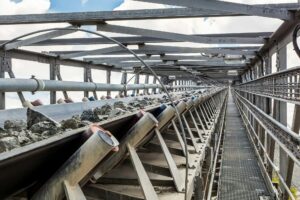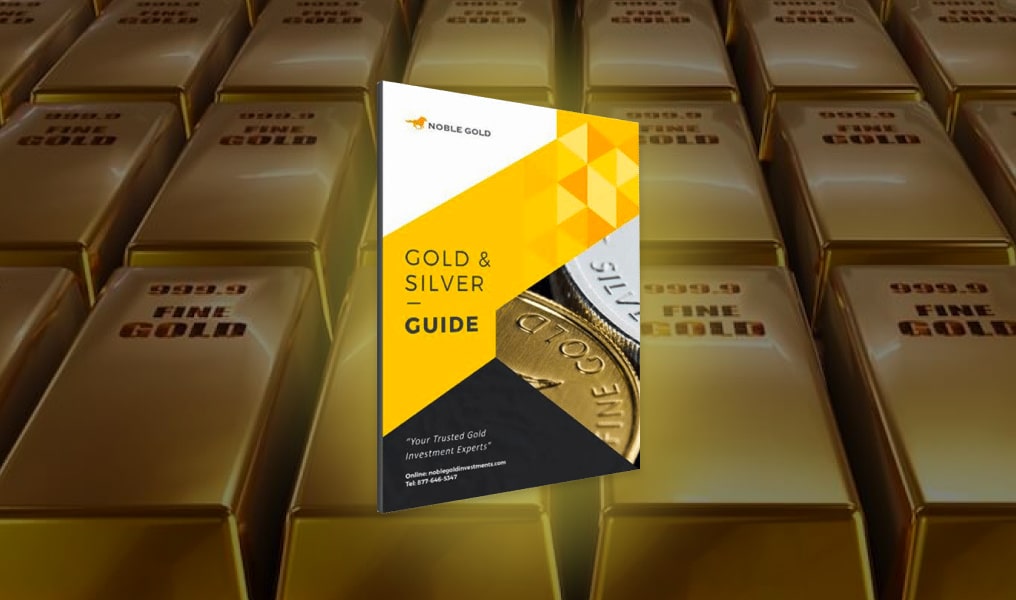Recent economic disruptions have jolted job markets globally. The International Labour Organization estimated an 8.8% decline in global working hours in 2020, equivalent to 255 million full-time jobs. Amidst this uncertainty, many people have turned to alternative investments like precious metals to secure their financial future.
If you’re feeling the effects of economic instability or are worried about job security, it may be time to consider investing in precious metals. Keep reading to learn more about how these metals can help alleviate the effects of job market instability and ways you can invest in these assets.
Factors Influencing Job Market Instability
Job market instability can be influenced by various factors, both at the macro and micro levels. Understanding these factors can help individuals and policymakers address the challenges of job market instability.
Economic Conditions
The unpredictable economic conditions can profoundly impact the job market, increasing uncertainty for workers and employers. This uncertainty arises because economic volatility can result in sudden changes in demand for goods and services, affecting employment levels and job security.
When the economy is performing well, businesses are more likely to hire new employees and invest in expanding their operations. However, during economic instability, businesses may be forced to reduce their workforce or freeze hiring altogether. This can lead to layoffs, reduced hours, and other labor market disruptions.
Economic volatility can create a ripple effect across different industries and sectors, leading to a wider impact on the economy as a whole. For example, a slowdown in one industry can reduce demand for goods and services in other related industries, leading to further job losses and economic contraction.
Technological Advancements
Technological progress and automation have reduced the need for routine tasks and increased the demand for highly skilled jobs. Digitization and artificial intelligence have also led to significant changes in labor markets, as machines are now taking over cognitive, physical, and social tasks that humans once performed.
Emerging technologies such as robotics, machine learning, the Internet of Things (IoT), and data analytics are creating new occupations, while others may become obsolete. Cloud computing and virtual reality are transforming industries across the board – increasing productivity and thus impacting supply characteristics of labor market stability.
Global Events And Crises
Global events and crises – from economic downturns to pandemics and geopolitical upheavals – bring uncertainty and unpredictability that often lead to changes in employment trends and job security.
The 2008 financial crisis is a prime example, leading to high unemployment worldwide as businesses struggled to survive amid market turmoil. The recent COVID-19 pandemic also had a far-reaching impact on global labor markets. Certain sectors, such as travel, hospitality, and retail, suffered massive job losses due to closures and lower consumer spending.
Geopolitical events such as wars or trade conflicts can also disrupt labor markets. These situations can lead to changes in trade policy that affect industries dependent on international trade. Trade wars, for example, can lead to higher tariffs that hurt businesses and potentially lead to job losses.
Natural disasters and environmental crises can also lead to labor market instability. These events can lead to immediate job losses, especially in sectors such as agriculture or tourism. However, they can also create jobs in other sectors, such as construction and environmental protection, as communities rebuild and adapt to new circumstances.
Historical Analysis Of Precious Metal Demand During Job Market Instability
According to a study by the World Gold Council, gold has delivered an average annual return of 10.1% since 1971, compared to 7.4% for equities and 5.7% for bonds. This makes precious metals a potentially valuable component of an investment portfolio, especially in times of economic uncertainty.
The Dot-Com Crash
The dot-com crash of the early 2000s was a time of great uncertainty in the global economy. The rapid growth and expansion of the internet industry had led to a speculative bubble, with investors pouring money into tech stocks in the hopes of striking it rich. However, when the bubble burst in 2000, many companies went bankrupt, and millions lost their jobs.
Despite this economic turmoil, gold saw a steady rise in price during this period, from about $280 per ounce in 2000 to over $800 per ounce in 2008. This is a testament to the resilience of precious metals in the face of labor market instability.
2008 Market Crash
2008 marked a significant period in the global economy, as the world was hit by one of the worst financial crises in history. The crisis was caused by a combination of factors, including the collapse of housing markets, the subprime mortgage crisis, and the failure of major banks and financial institutions. As a result, the stock and bond markets were thrown into disarray, with investors left scrambling for safe-haven assets to protect their portfolios.
Despite the volatility, gold’s price rose by about 24% in 2009 as investors sought refuge from the tumultuous financial markets. This surge in demand for gold led to a significant increase in its price, making it one of the most profitable investments during the financial crisis.
How Job Market Instability Shapes Precious Metal Demand
Job market instability can significantly impact the demand for precious metals. When investors understand this context, they can make more informed decisions about when to buy or sell precious metals.
Economic Uncertainty And Investor Sentiment
As job losses mount, consumer spending may decline, leading to recessions. Investors fearful of these economic conditions often seek safe investments, including precious metals, to protect their assets. As a result, demand for precious metals often increases during labor market instability.
Labor market instability can also negatively impact investor sentiment and increase market volatility. In such situations, investors often turn away from riskier assets and toward safer ones like precious metals. This shift may further increase demand for precious metals during labor market instability.
Monetary Policy Responses
Labor market instability can be a major problem for central banks, as it can have a negative impact on economic growth and stability. In such cases, central banks may resort to stimulative monetary policy to encourage economic activity. The most common methods are cutting interest rates or increasing the money supply, which can boost the economy in the short term.
When interest rates are lowered, borrowing becomes cheaper, encouraging people to spend more money. When more money circulates in the economy, demand for goods and services increases, leading to higher prices. This combination of higher spending and prices can lead to inflation, which can be a significant economic problem.
Investors often turn to precious metals, particularly gold, to combat inflation and protect their assets. Gold has long been considered a safe haven that retains value even during economic uncertainty. As a result, the demand for gold can increase when inflation rises.
The Role Of Precious Metals In Portfolio Diversification
In a climate of labor market instability, a diversification approach becomes even more prevalent. Traditional financial assets can be subject to significant volatility when economies go through periods of labor market instability. Precious metals, however, often serve as a stabilizing force within an investment portfolio during these turbulent times.
For investors looking to protect their assets during labor market uncertainty, strategically adding precious metals to their investment portfolio can be a smart move. Diversification, a cornerstone of sound investment practices, involves spreading investments across different asset classes to mitigate risk.
Precious metals often have a low correlation with other asset classes due to their unique financial characteristics. Their price movements don’t necessarily mirror those of stocks, bonds, or other financial assets. As a result, precious metals often retain or even increase in value during economic downturns when stocks and other assets lose value.
Ways To Invest In Precious Metals During Market Uncertainty
There are several ways to invest in precious metals during market uncertainty. Each method comes with its own benefits and risks, and the best choice depends on your financial goals, risk tolerance, and investment horizon.
Physical Bullion
Physical bullion, especially gold, is widely recognized as a safe investment in market uncertainty. They’re gold and silver with a purity of at least 99.5%, available as bars or bullion.
For many investors, owning physical precious metals such as gold is an important part of their portfolio due to its universal value and stability. Investing in physical precious metals can provide financial security and protection from market fluctuations, making it an attractive option for risk management and portfolio diversification.
Precious Metals IRAs
Unlike traditional or Roth IRAs, which typically consist of standard financial assets such as stocks, bonds, or mutual funds, a Precious Metals IRA includes physical precious metals such as gold, silver, and platinum. This is because the IRS allows certain types of precious metals in an IRA, particularly bullion coins and bars, that meet specific purity standards.
The tax treatment of precious metals in an IRA is similar to other traditional IRA investments. If you sell your precious metals at a profit and keep the money in your IRA account, those gains are tax-deferred, meaning you don’t have to pay taxes until you withdraw the money from your IRA account. This way, over time, they can make a larger portion of their investment earnings work for them and potentially earn more in the long run.
However, certain rules and procedures must be followed when investing in a Precious Metals IRA. For example, precious metals must be held in a depository approved by the IRS, and certain types of precious metals (such as collectible coins) may not be held in these IRAs.
Gold ETFs
Gold ETFs are mutual funds that hold gold securities and offer investors the opportunity to buy or trade precious metals and metal-related assets. These exchange-traded funds are becoming increasingly popular in times of market uncertainty because they’re believed to be negatively correlated with the market, thus offering diversification benefits.
They offer investors a convenient way to gain exposure to gold without having to own physical precious metals or worry about storage. Recently, high gold prices have attracted investment in exchange-traded funds backed by gold securities, making them an attractive option for those looking to invest in precious metals during market instability.
Gold Mining Stocks
Unlike physical gold, gold mining stocks offer the potential for higher returns. These stocks represent an ownership stake in companies that mine and produce gold, allowing investors to share profits when gold prices rise.
Additionally, investing in gold mining stocks offers diversification benefits because they’re tied to the price of gold and can also be influenced by factors such as company performance and management.
For investors who want to take advantage of market volatility and seek alternative investment opportunities in uncertain times, gold mining stocks are a viable option with their own risks and benefits.
Safeguard Your Future With Precious Metals
If you’ve experienced the sting of job loss or witnessed the economic turmoil around you, it may be time to start investing in precious metals. SpaceXgold allows you to diversify your investment portfolio beyond traditional assets and invest in a range of precious metals like gold, silver, platinum, and palladium.
Whether you’re looking to store your metals at home in their physical form or directly in a tax-advantaged IRA, give us a call or click here to create an account today.






